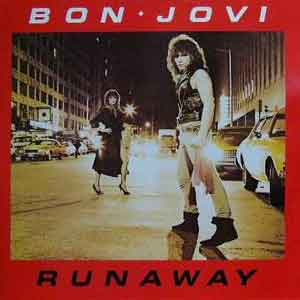Bon Jovi – “Runaway”:
Where the Hair, the Hype, and the Hooks Began
Released in February 1984 as the lead single from their self-titled debut album, “Runaway” is where Bon Jovi’s story officially kicked off. With its mix of synth-laced drama, hard rock hooks, and underdog edge, it served as the band’s first glimpse into mainstream success. It wasn’t yet arena rock, but it was already aiming for the rafters.
Before the cowboy anthems and power ballads, there was this: one song, one demo, one shot.
The Demo That Wouldn’t Die
“Runaway” didn’t start as a band anthem — it began as a scrappy demo recorded in 1982 at the legendary Power Station studio in New York. At the time, Jon Bon Jovi was still navigating odd jobs, performing club gigs, and pushing his music wherever someone might listen. He assembled a group of seasoned session players for the demo: guitarist Tim Pierce, Bruce Springsteen’s keyboardist Roy Bittan, drummer Frankie LaRocka, and bassist Hugh McDonald (who years later would quietly become Bon Jovi’s official bassist). The hauntingly iconic keyboard intro — often mistaken for Bittan’s work — was actually composed by Mick Seeley.
Jon submitted the track to WAPP-FM (“The Apple”), a New York radio station hosting a talent search for local artists. “Runaway” was featured on the station’s “Homegrown” compilation in 1983, and what happened next surprised everyone. The song exploded on the airwaves, capturing listeners with its punchy energy and relatable rebellious streak. Almost overnight, Bon Jovi became a buzzed-about name in the tri-state music scene.
Fueled by this unexpected momentum, Jon moved quickly to form a full band. He brought in guitarist Richie Sambora, keyboardist David Bryan, drummer Tico Torres, and bassist Alec John Such — and before long, Bon Jovi had landed a deal with Mercury Records. “Runaway” wasn’t just a demo anymore. It was the spark that ignited a career.
A Synth-Rock Snapshot of Teenage Rebellion
Lyrically, “Runaway” follows a familiar but powerful arc: a teenage girl escaping the disillusionment of home life, slipping through the cracks into the world beyond. The chorus line — “Ooh, she’s a little runaway” — became a rallying cry for MTV-era youth.
The track’s blend of icy synths, urgent guitar lines, and Jon’s theatrical delivery balances rock grit with New Wave production sheen — a sound still figuring itself out, and all the better for it.
A Music Video Straight from the Neon Underground
Directed by Mike Cuesta, the official music video leaned into stylized noir imagery: neon lighting, alleyway drama, and Jon in leather channeling full rock star intensity. Actress Jennifer Gatti appears as the titular runaway, although the video’s abstract narrative led Jon to later call it “the worst piece of s–t I ever saw in my life.”
Cringeworthy or not, it got attention — and heavy rotation on the newly launched MTV, helping the band break through the screen.
Chart Performance and Critical Spark
“Runaway” reached No. 39 on the Billboard Hot 100, giving Bon Jovi their first Top 40 hit and marking the start of their radio and chart presence. The single’s U.S. B-side was “Love Lies”, while some UK editions featured “Breakout.”
Critics were split — some dismissed it as flashy glam-rock, others praised its catchiness and ambition. In hindsight, it was the blueprint: passionate, polished enough to play wide, but still crackling with the energy of a band on the edge of something bigger.
The Fuse Before the Explosion
“Runaway” remains a cornerstone of Bon Jovi’s origin story. It’s the only track from their first two albums still regularly featured in live performances. For all the polish they’d later adopt, this debut single captures their raw hunger, earnest drama, and a hook-first mentality that would carry them to global superstardom.
It may not be their biggest hit, but it’s their first battle cry — and decades later, it still runs hot.

